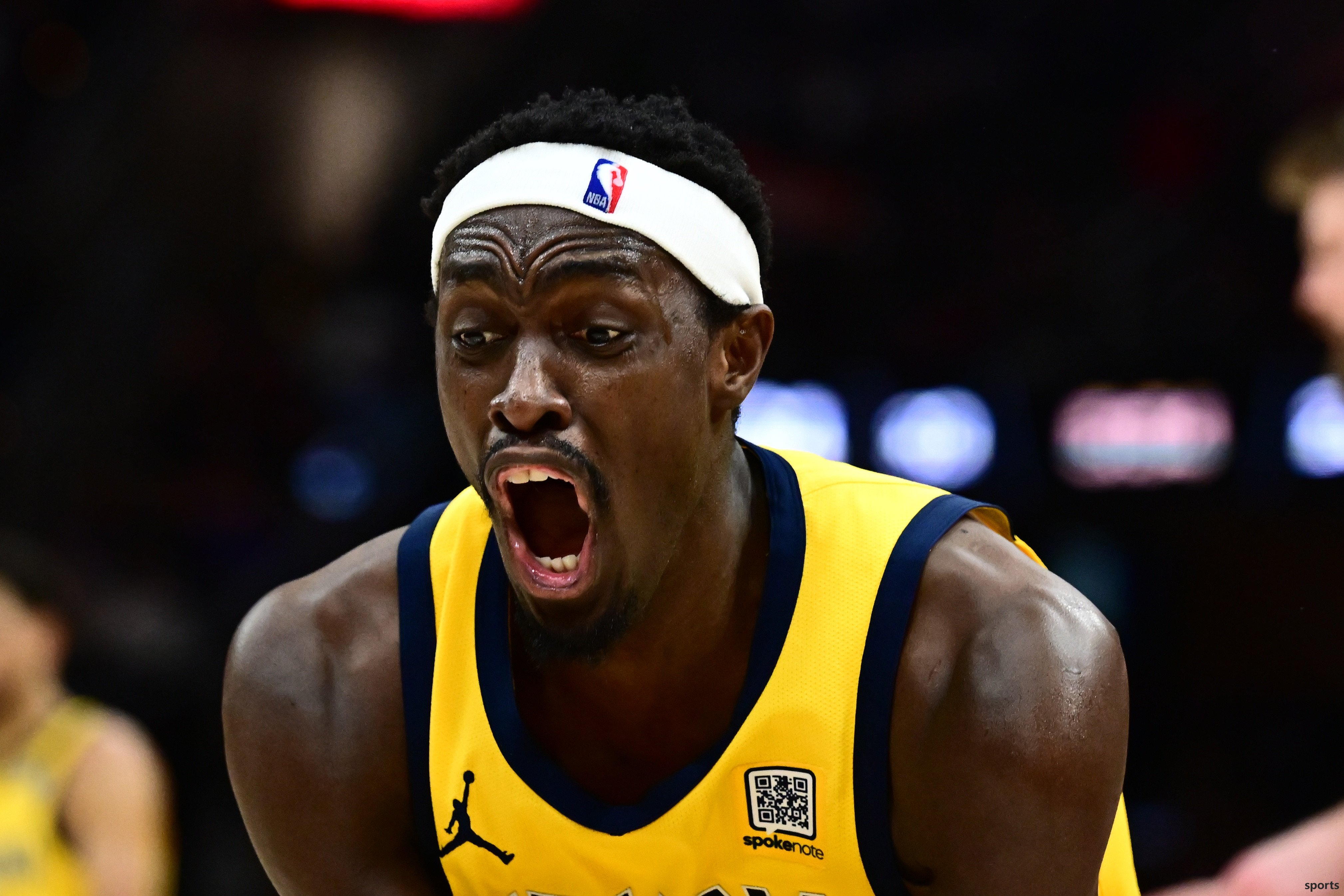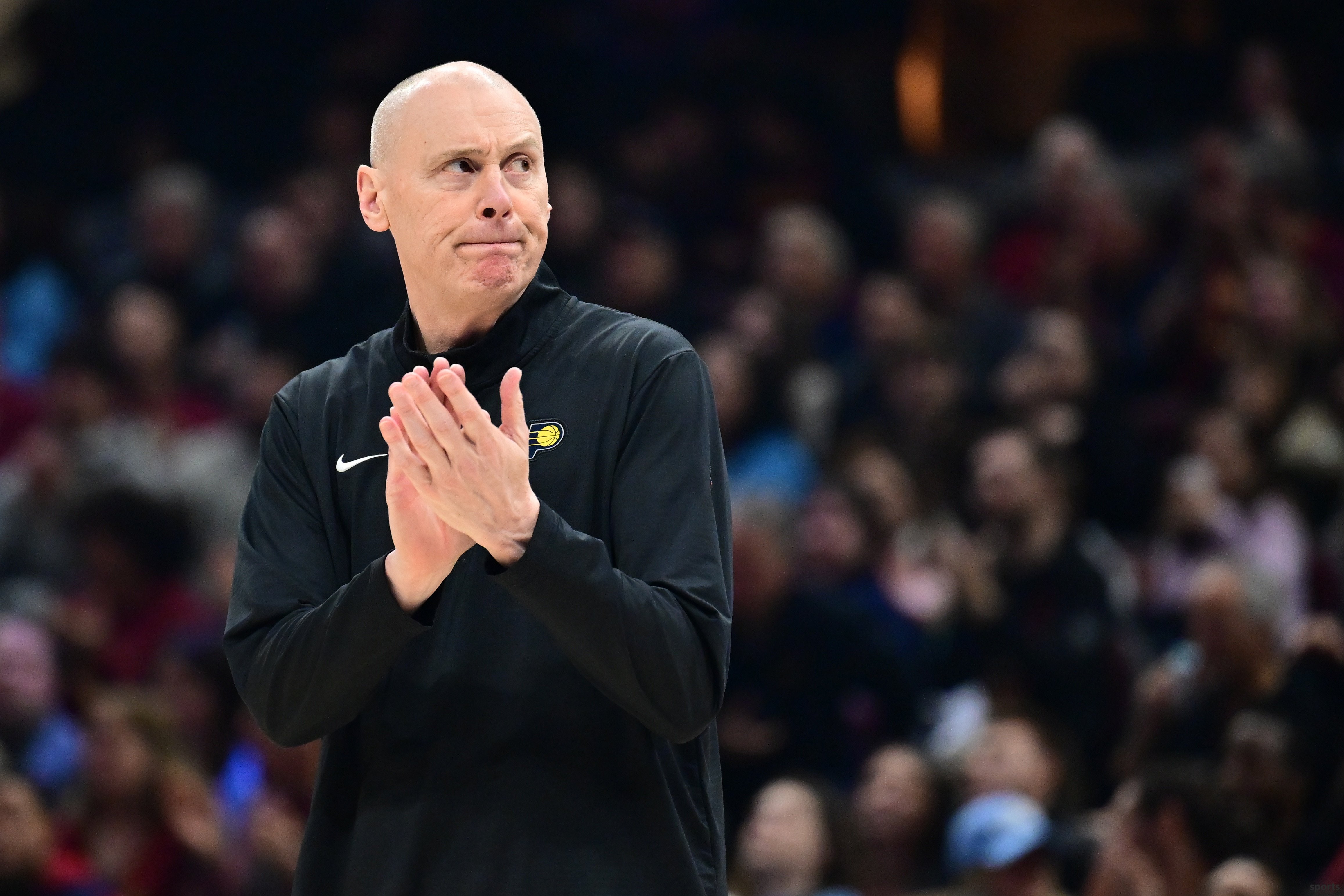Moon Sports > Basketball > How big is the difference between 7 and 11 players playing? The Pacers made the first contribution 2-0, and the Knicks were exhausted and exhausted
How big is the difference between 7 and 11 players playing? The Pacers made the first contribution 2-0, and the Knicks were exhausted and exhausted
I believe everyone has noticed the main gap between the Pacers and the Knicks. 11-player rotation and 7-player playing are definitely two different concepts.
Pacers actually used 11 players to rotate in the G2 of the division final, six players were double-digit and nine players scored, and the whole nation was full of soldiers and a river of gathering. Everyone can contribute, and this terrifying team energy must give 2011 champion coach Carlisle a thumbs up.
Pain performed extremely outrageously, Thibodeau frowned, and his expression when he replaced him in the fourth quarter was almost sucking. There is no way. Payne is the eighth player in the Knicks' rotation. This point is really too abstract. The Knicks actually play 7 people.
11 players rotated vs. 7 players played. The game reached the fourth quarter, and the winning Libra was obviously leaning towards the Pacers.
Pacers are full of energy. McConaughey and Sheppard showed a sense of existence in the fourth quarter. Later, Nesmith, Siakam, Halliburton and Turner were all high in fire. The firepower of the two lineups was seamlessly connected, and the quality long rotation was really easy to use.
The Knicks' offense in the fourth quarter depends on Brunson and Bridges. They rely heavily on Mitchell Robinson for defense and rebounding. The physical disadvantages of short rotation are obvious and they collapsed in the final quarter.
In terms of rotation depth and logic, these two teams are not on the same level at all.

Mitchell Robinson played 29 minutes and 20 seconds in this game. This point is the person who really changed the situation of the Knicks.
The Knicks were behind 9-19 in the starting lineup. After Mitchell Robinson came on the court, the Knicks once led the Pacers 40-33. During Mitchell Robinson's presence, the Knicks scored at most 31-14 and 17 points!
Mitchell Robinson has obvious body tonnage and offensive rebound advantages. He can force the Pacers to choose from Turner/Thomas Bryant/Tony Bradley to choose one against each other, and restrain the Pacers from daring to highlight the mini five-small run and fight during Mitchell Robinson's presence.
Thibodeau's reuse of Mitchell Robinson, a blue-collar center, also fundamentally determined the defensive tone of G2, competing for height, muscles, and vitality, turning the game into a melee battle. The idea of trying to compete with the Pacers for hardness and victory is self-evident.
Mitchell Robinson not only created a second offensive opportunity for the Knicks by rushing offensive rebounds, but also indirectly liberated Brunson. With Mitchell Robinson on the court, the Pacers Turner/Thomas Bryant/Tony Bradley did not dare to switch defenses in the three insides. Once the Pacers defended the Knicks with a 1/5 pick-and-roll, the Knicks' three-pointer ambushed at the weak side corner also got the expected open three-pointer opportunity, and Brunson's 11 assists became the beneficiary.
Mitchell Robinson + Towns' double tower lineup also played influentially. Towns, with 213 cm, was misplaced in the No. 4 position, and bullied Siakam and scored 12 points in the second quarter.
Obviously, Mitchell Robinson's lineup with four small or double towers has both achieved results. This is an important rotation card for Thibodeau to take the initiative to seek change and attack. The Pacers are forced to deal with it through the pile height. The tug-of-war in the first three quarters is basically in line with the Knicks' strategic concept for the game.

G1 Nesmith scored 30 points and became the explosive point. G2 Siakam scored 39 points and the Pacers pressed the gourd and floated up. The Knicks felt really uncomfortable on the defensive end.
Siakam destroyed Anunobi one-on-one. When the Knicks played the five-way lineup of Towns playing against the center, if Towns did not match Siakam, then anyone Siakam played was misplaced.
Knicks chose to defend Siakam as much as possible. After all, Turner, Halliburton, Nesmith and Nemhard all had three-point shooting range, and the loss of three-pointers was not worth the loss. The Pacers' five-in-one attacking firepower gave Siakam a comfortable singles space.
Knicks did their best in single defense, trying not to give Siakam a chance to turn around and attack the basket, but Siakam hit a lot of difficult points in this game and turned around and shot in the mid-range shot. The Knicks' single defense achieved the goal of acquiesceing Siakam's difficult shooting bet, but Siakam delivered a quality and quantity performance, and held the ball to hit Towns and scored 2+1 many times.
Siakam was the Raptors' 2019 champion striker. He really supported the Pacers' hard-hitting base in the first three quarters, which is exactly what the Pacers hoped he would do in the series.
In this round of the series, Siakam's offensive end was indeed misplaced except for facing Towns and Mitchell Robinson.

Knicks' moves are basically exhausted, but we don't know who will be the explosive point in the next game of the Pacers.
The Knicks actually played 7 people, and Payne was obviously not easy to use at this level: he played 19 minutes in two games, 2 of 10 shots in total. His role was to take Brunson's rotation time. He played 8.8 minutes in the first round of the playoffs and 4.8 minutes in the second round; McConaughey was the same position as the Pacers, and the substitute No. 1 of the two teams was not in the same level.
The Knicks played on the bench with blue-collar center Mitchell Robinson and 185 cm short jumper Mike Brad. The difficulty of Thibodeau in placing troops can be imagined. The short rotation has laid hidden dangers on the main force's physical fitness earlier.
There is no secret to the Knicks using short rotation to win, and they rely heavily on the four main attack points of Brunson, Towns, Anunobi and Bridges to hit explosive output, otherwise the Knicks would have gone far in the series..
The Knicks started with five tigers, Towns (224 million in 4 years), Anunobi (2125 million in 5 years), Brunson (1565 million in 4 years), Hart (81 million in 4 years), and Bridges (1 year left in 4 years) had an explosion in salary, which fundamentally determined that the Knicks had no money and space to make a good substitute. The seven people played basketball in a similar situation as the Nuggets, and the short rotation could not be blamed for Thibodeau.
Pacers 11 rotation is in depth terrifying. The highest playing time in the G2 team was Nemhard playing 36 minutes and 47 seconds. Shepard can take Nesmith's rotation time, McConaughey can let Haliburton rest with peace of mind, and Mathering can replace Nemhard and Toppin for Siakam. Each point has a corresponding substitute. The team has abundant physical fitness in the fourth quarter, each performs its own duties, has a clear division of labor, and is the whole nation. It is no accident that it has repeatedly staged a major reversal in the fourth quarter of this season.
11 players rotate and all players have the combat power. The Pacers are currently leading by two home games with a score of 2-0. The 2011 champion coach Carlisle is worthy of the most underrated behind the Pacers.
Related Posts
Danny Green: It s not James fault that Westbrook can t play without the ball. He played for a few more years after leaving the Lakers.
BasketballOctober 12th Recently, former NBA player Danny Green talked about Kanter's remarks in his personal podcast "Inside The Green Room". Former NBA player Kanter believes that Westbrook is now without the ball because he was a scapegoat whe...
moreNew Season Tour of the Suns: The Big Three disintegrated into the Young Storm, with Booker leading the team during the rebuilding period
BasketballThe Phoenix Suns were 36-46 last year. After a losing season, they restructured their lineup this season, fired head coach Mike Budenholzer, and sent 15-time All-Star Kevin Durant to the Rockets. It also bought out the contract of three-time All-Sta...
moreMedia professionals share China competition photos on social media, recording Zeng Fanbo’s performance on the court
BasketballHupu reported on October 11th that today, media person Santu shared a photo album of the Chinese competition on social media. Zeng Fanbo did not score in yesterday's game. The Nets and Suns will have their second game on Sunday....
more
Hot Posts
- Seth Curry - Brothers on the same stage, Seth fights for the championship
- Anthony is officially inducted into the Hall of Fame! Maybe he only retired from the Knicks No. 7, but the Nuggets No. 15 cannot retire?
- NBA offseason turmoil: The giant chess game behind a billion-dollar contract
- Scott: Tatum seems to die when his Achilles tendon breaks, but Kobe will never do this
- American News: The Cavaliers don t need to trade core players such as Garland. They still have great potential if they are not the Lakers.
- Successfully played the role of the surprise! The Pacers forward performs amazingly in overtime?
- Questioning the Mavericks to Becoming the Mavericks! Famous reporter: Antetokounmpo is on his way to the Lakers
- Homegren burst! Thunder 149-106 Nuggets, Alexander watches 34+4+7, Harten 14+8+5
- 4.3 seconds to win the gods! Brunson s final victory tribute to Jordan, New York s new king rewrites the history of the second round pick in one game
- Su Qun defines "Hexion Moment"! 16+3 caps set off NBA, the triple truth behind Billups praise
Recent Posts
-
James choice to execute the contract allows him to experience "there are many people who are popular"
-
Westbrook stated that his next home will be announced soon
-
20+3+3 for the first time! This is the person that the NBA can t get
-
Continue your wandering career! Westbrook officially lifts the Nuggets, where will the next stop of the 36-year-old veteran?
-
Timberwolves win! Randall 24+7+11, Huazi celebrates with his teammates after the game, McDan is interviewed
-
Leave if you don t give a big contract. US media shows the five people who can replace Reeves. Who is the most suitable
-
The Clippers are the most heartbreaking! Two data certificates are not dependent on the whistle to get MVP, and they can sign 380 million in five years.
-
It s just the sixth player in the NBA, and it s a big killer in the international competition!
-
Interested in the Lakers, Abuselle praised Kobe as goat! His contract has expired!
-
Teague: Whitmore certainly broke out against the Rockets, but not sure if Jaylen Green can do it